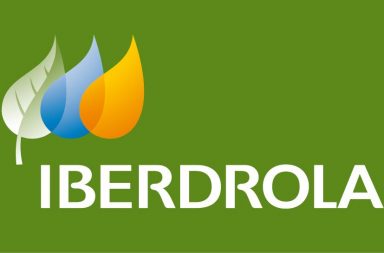
However, the way is not guaranteed and may appear only 50% of the time. It is, therefore, essential for traders to wait for the confirmation candle before acting on dragonfly doji reversal. A dragonfly doji may indicate a possible reversal of a prior downtrend. The continuation pattern is created when the open and close are at the same level with a long lower shadow and no upper shadow.
Nifty forms another Hanging Man candle – Bizz Buzz
Nifty forms another Hanging Man candle.
Posted: Wed, 06 Sep 2023 05:42:22 GMT [source]
You may wonder why you should even bother with this type of candlestick pattern or its significance. After all, the doji is a relatively unusual candlestick pattern, and it’s not as widely recognised as some of the other patterns regularly discussed in technical analysis courses. It’s dragonfly doji a critical candlestick pattern, but it is usually confused with other patterns that have similar appearances. The defining characteristic of a doji is that it shows no upper and lower shadows; therefore, the body will be roughly the same size as the candlestick’s “real body”.
Chart Example: The Dragonfly Doji Pattern
Dragonfly Doji patterns are somewhat rare in the market but they signal increasing potential that price trends are about to see a significant turnaround. Following a longer-term downtrend, the majority of the market’s momentum is strongly focused on the downside. Once this price momentum reaches a point of exhaustion, its final point of completion is usually expressed as a “flash” event to the downside. With no more sellers left in the market, buyers are able to enter at the beginning of the next uptrend. Ultimately, a strong price performance on the day that follows the Dragonfly pattern helps to confirm the reversal.

The dragonfly doji is a candlestick pattern that indicates price action indecision that could lead to a potential reversal. A Dragonfly Doji conveys that the price opened at the high of the time period. There was a great decline during the session, and then the price closed at the high of the session.
If the candle has a small body, it’s a Doji, and a ‘T’ letter should be used to identify it. When it happens in an uptrend, it is usually a sign that the asset will reverse downwards and vice versa. As shown above, the dragonfly pattern is characterized by a long lower shadow and no upper shadow. Also, when the candle has a small body, it can be said to be a hammer candlestick. The Harami pattern is a 2-bar reversal candlestick patternThe 2nd bar is contained within the 1st one Statistics to…
Gambler’s Fallacy in Day Trading: Impacts on Decision-Making
The Dragonfly Doji is considered a robust and reliable signal in these situations. Once again, it’s advised that traders should use the Dragonfly Doji alongside other indicators. It will always work best when you are using it with your other technical analysis and favorite trading indicators. After this move lower, it forms a dragonfly doji that signals a potential reversal back higher inline with the trend. Whilst it is fairly straightforward and simple to identify, the dragonfly doji does not form all that often compared to other candlestick patterns.
As a result, buyers came in at the end of the day and pushed the price back up. The Gravestone Doji is a strong bearish signal frequently used with other indicators to confirm a trend reversal. Because the Doji family is almost entirely composed of the dragonfly Doji pattern, paying close attention to one on your chart is the most important thing you can do.
Dragonfly Doji
So the open, high, and close are all the same (or about the same) price. This signal’s presence is most significant when it appears after a downtrend, preceded by bearish candlesticks. It suggests that the trend’s downward direction may soon reach a turning point. Dragonfly Doji is a pattern that regularly appears at pivotal market moments. This is a specific Doji where both the open and close price are at the high of a given day or are relatively close to it.
As a result, it is essential to consider other price reversal patterns when analyzing price movements. A long lower shadow suggests aggressive selling during the candle period, but buyers could absorb the sale and push the price back up since the price closed near the open. The long lower tail of a dragonfly doji indicates that large amounts of selling have flooded the market, which caused downward pressure on the security price during a certain period. However, at the end of that period, the close price is still able to stay at the level of the open price.
Content Categories
Dragonfly Doji indicate that there may be an imminent change in market sentiment or some sort of reversal from bullishness to bearishness happening soon. The Dragonfly Doji is a specific type of candlestick pattern that can occur at the end of an uptrend. It’s important to understand what this candlestick means for your trading strategy because it could be an opportunity to take advantage of the market or it may indicate that the trend has ended. Furthermore, it is very unlikely to see the perfect Doji in the forex market.
- The technical analysis considers the dragonfly Doji to be a candlestick pattern.
- Dragonfly Doji patterns are somewhat rare in the market but they signal increasing potential that price trends are about to see a significant turnaround.
- These are two confluences that will enhance the power of trend reversal in this candle.
- Traders often look for confirmation at the candle following the dragonfly doji to see whether it moves in the same direction as the expected reversal.
- The Doji candle has a dragonfly theme, similar to that of a Doji candle.
- And it is subsequently reversed in time to close near the opening price.
Dragonfly Dojis can be a reasonably decent bullish reversal pattern when it takes place. Of course, it requires certain situations for it to be appropriately formed. It must occur at the end of a downtrend, and the confirmation candle needs to support it. Even in ideal circumstances, there’s no guarantee that it will appear.
We look for stocks positioned to make an unusually large percentage move, using high percentage profit patterns as well as powerful Japanese Candlesticks. Our services include coaching with experienced swing traders, training clinics, and daily trading ideas. Doji are the simplest of all candlestick patterns, so they’re very easy to identify.
The Dragonfly Doji is a candlestick pattern that can signal a potential trend reversal. The Dragonfly pattern typically forms when the asset’s high, open, and close prices are the same. Price charts are one of the most valuable tools for technical analysis.
What is a Doji candle pattern and how to trade with it? – Cointelegraph
What is a Doji candle pattern and how to trade with it?.
Posted: Mon, 12 Dec 2022 08:00:00 GMT [source]
Following a downtrend, the dragonfly candlestick may signal a price rise is forthcoming. Following an uptrend, it shows more selling is entering the market and a price decline could follow. In both cases, the candle following the dragonfly doji needs to confirm the direction. In conclusion, the dragonfly doji may be formed in a bullish or bearish market space.
How to Use the Dragonfly Doji
https://g-markets.net/ candlesticks are indecision candlesticks and are not as common as other patterns. A dragonfly Doji is a bullish reversal candlestick pattern that forms when the open, high, and close are all at or very close to the same price. The long wick to the downside shows that sellers tried to push prices lower but were ultimately unable to do so. This indicates that buyers are now in control and that prices are likely to move higher from here. Price rejection from the support zone indicates that buyers are stronger than sellers and they will turn the bearish trend into bullish. But the same opening and closing price of candlestick shows that there is indecision in the market.
